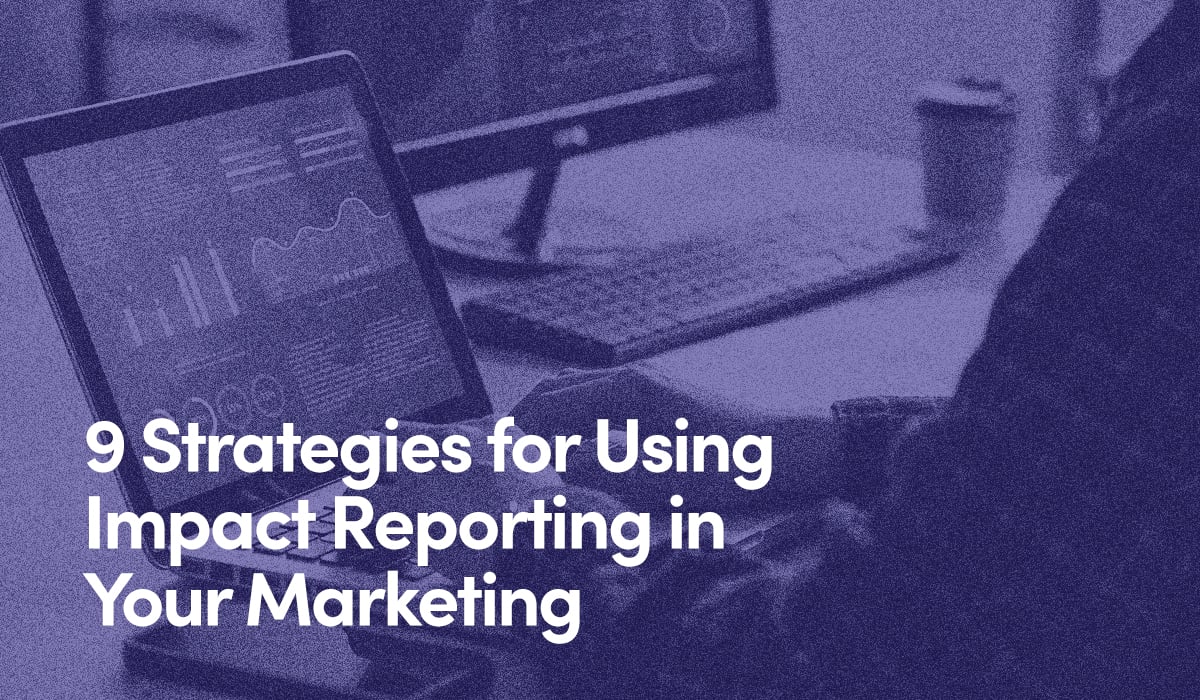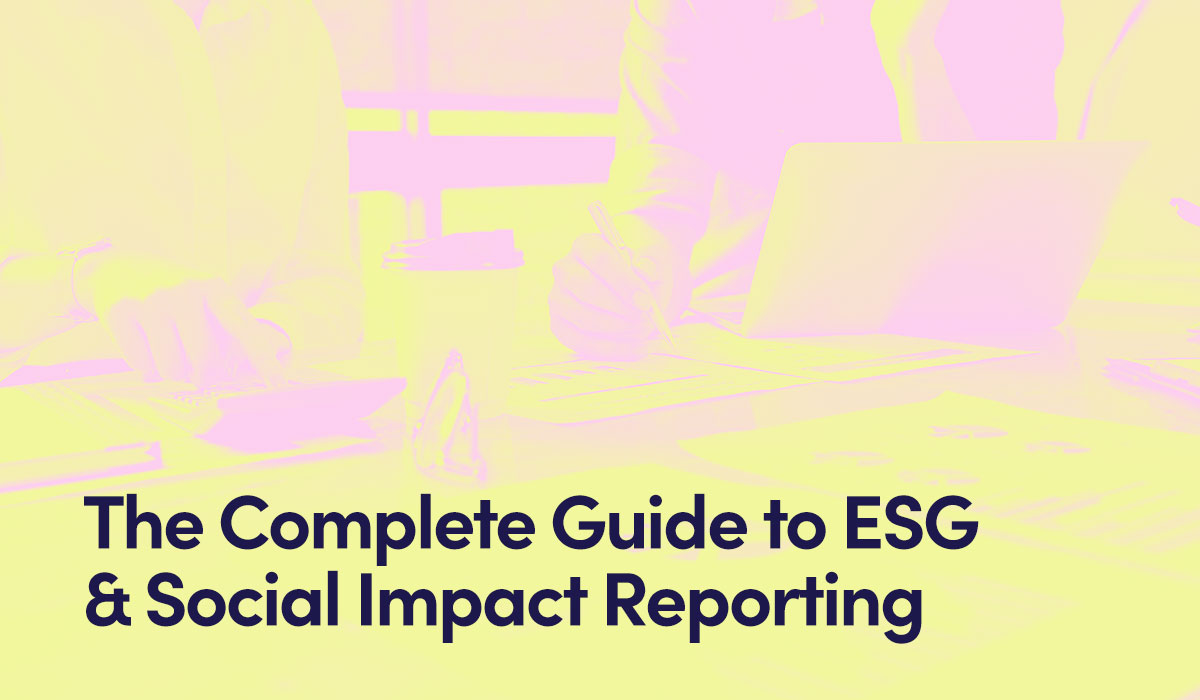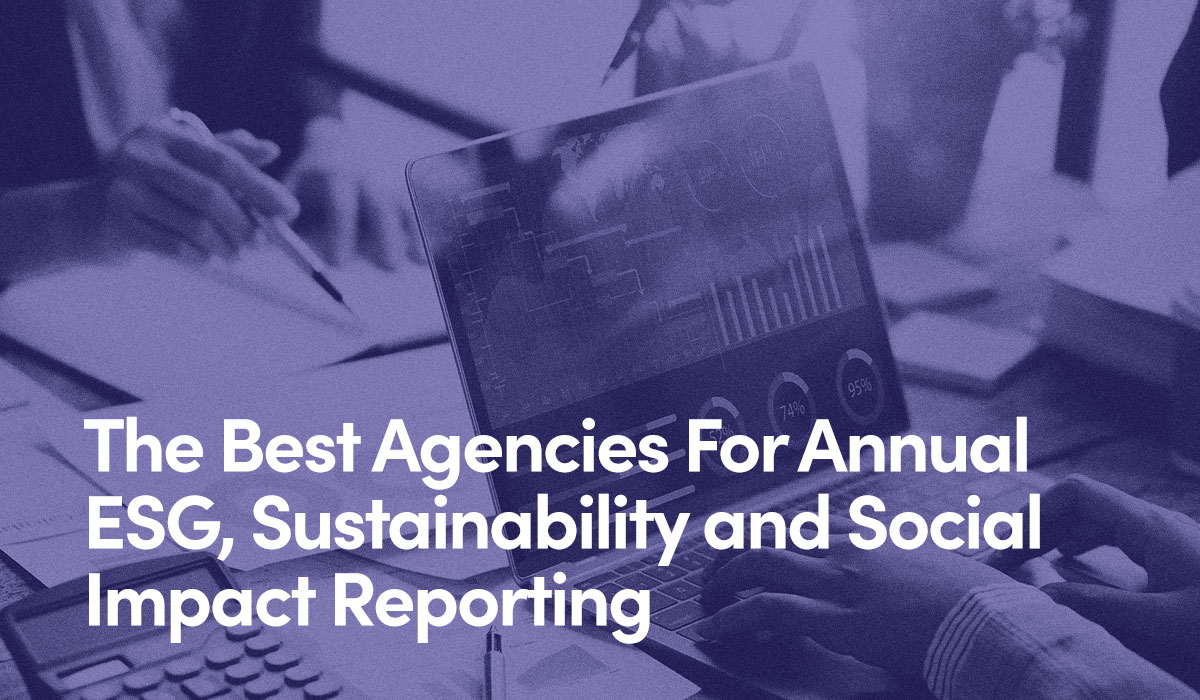ESG (environmental, social, and governance) and other forms of impact reporting are burgeoning fields, driven by ongoing changes to the structural and cultural roles organizations play in society. This is especially true for enterprise-level companies that increasingly function more like multinational corporations.
As the world contends with widening income inequality gaps, geopolitical conflicts, and worsening climate crises, the call for accountability from various stakeholders is on the rise. For large public corporations, this also means aligning with directives from global authorities, financial markets, and regulators to comply with more standardized ESG frameworks.
One of the most notable trends in recent years has been the growth of standard impact reporting for smaller organizations. These firms have been able to utilize established frameworks or customized approaches to tell their stories and be more transparent about their contributions—positive and negative—to society and the environment.
As more companies lean into impact reporting in the coming years, they'll be contending with new regulations, frameworks, and, hopefully, more effective ways of measuring organizational impacts, such as emissions.
The sudden ubiquity of ESG and other forms of reporting underscore the fact that the impact movement is still evolving. Let’s look at some of the emerging themes to better understand the current landscape.
ESG Reporting Frameworks
While there is broad agreement that risks to global investment, growth, and prosperity are better captured with financial and non-financial reporting, precisely how those risks are measured is still up for debate.
Widely used frameworks include those from the Global Reporting Initiative (GRI), the Sustainability Accounting Standards Board (SASB)一now part of the International Sustainability Standards Board (ISSB)一and the Task Force on Climate-Related Financial Disclosure (TCFD). While they share commonalities, there are also meaningful differences.
In March 2022, the Securities and Exchange Commission (SEC) announced new ESG disclosure requirements for public companies, including a more comprehensive and standardized treatment of climate-related impacts. Similar regulations in Europe have been issued via the Corporate Sustainability Reporting Directive.
Still, according to some experts, a universal reporting mechanism remains a long way out.
Mike Lenox is a professor of business, senior associate dean and chief strategy officer at the University of Virginia’s Darden School of Business.
As an example of the challenge of achieving measurement uniformity, he notes that even carbon emissions can be difficult to calculate definitively.
“Measuring carbon emissions一probably the most quantifiable of ESG metrics一can be vexing, especially Scope 3,” he explains.
According to the U.S. Environmental Protection Agency, Scope 1 emissions occur directly from company operations, such as fuel usage by a truck fleet; Scope 2 covers indirect emissions related to the company’s energy purchase, such as electricity for the fleet corporate headquarters; and Scope 3 emissions refer to the way in which companies are indirectly responsible for emissions produced by assets they don’t control. A primary example of Scope 3 would be emissions produced in the company’s value chainーup and downstream.
Scope 3 adds significant complexity to the measurement process and, yet, needs to be counted. According to research from global nonprofit the Carbon Disclosure Project (CDP), Scope 3 emissions account for an average of 75% of total Scope 1, 2, and 3 emissions across all business sectors analyzed.
Lenox underscores the point:
“Emissions in your supply chain are really tough to measure. And then, on top of it, how should we evaluate the materiality [significance] of those emissions [given a company doesn’t have control over them]? The ESG movement is really going to struggle with this,” he says.
Supply Chains (& Smaller Firms) Are Taking On New Significance
Disruptions to global supply chains during the coronavirus pandemic brought renewed attention not only to corporate resilience issues but also poor labor conditions and human rights abuses within supply chains.
While this is not new ground一the apparel industry has been at the center of child labor issues for decades一the increased demand for operational transparency, regardless of industry or sector, has brought it to the fore.
For example, with the 2022 passage of the EU Directive on corporate sustainability due diligence (a regulatory framework), companies are obliged to identify, bring to an end, prevent, mitigate, and account for adverse human rights and environmental impacts in operations, their subsidiaries, and their value chains.
In addition, continued efforts in the U.S. and other markets to limit exports with compromised supply chains will further compel companies to audit the practices of their supply chain partners.
This will have a particular significance for smaller companies that otherwise may not be as focused on impact reporting as their Fortune 500 counterparts. According to Lenox:
“You will definitely see pressure [from larger companies] because so much depends on supply chains.”
“They will push down on their supply chain partners [for alignment and compliance],” he adds.
B2C & B2B Are Fully Engaged in Impact Reporting
As consumers have increased their control over purchasing decisions, B2C companies have become increasingly sensitive to buyer tastes and concerns. Not only can consumers abandon brands with the click of a mouse, but they can also challenge corporate strategy and threaten millions of dollars worth of brand value with a single social media post.
However, B2B companies are now as engaged as their B2C counterparts. The focus on supply chains as a significant driver of impact has prompted companies to more closely scrutinize their value chain partners一again, both up and down stream一regardless of industry.
Whether you’re an apparel retailer, ball-bearing supplier to the auto industry, or B2B marketing agency, your company will likely be part of a value chain that could, at some point, be evaluated for ESG impact and reporting.
Accelerate Portfolio Value Creation
Looking for Marketing Leadership Without the Overhead?
Drive Growth With Our PE Portfolio Solutions arrow_forwardESG Backlash Has Increased
The increased backlash to ESG reporting and investing comes from various perspectives. They include concerns about the lack of standardization and consistency in ESG data and ratings, and that the subjective nature of some ESG metrics makes them easy to manipulate.
Others argue ESG initiatives are "virtue signals" that may not lead to real-world impact. They contend companies may engage in "greenwashing" or other superficial sustainability efforts to appeal to ESG investors and other stakeholders rather than make substantive changes to their business practices.
More recently, criticism has come from policy organizations that posture toward climate skepticism. Anti-ESG legislation has advanced in West Virginia, Texas, Kentucky, and other states to exclude industry-leading asset managers that opponents claim are boycotting the fossil fuels industry because of ESG concerns, thus potentially putting corporate financial assets at greater risk.
Despite these criticisms, ESG and impact reporting and investing continue to grow, driven by increasing demand from consumers, investors, employees, and other stakeholders for greater transparency, accountability, and action around environmental and social issues.
Greenwashing Is Coming Under Increased Scrutiny
As expectations for ESG and impact reporting increase among stakeholders, so to is the call to combat “greenwashing,” when organizations present an environmentally responsible public image that’s falsified or misleading.
According to global professional services company Accenture, more than one-third (34%) of the world's largest companies are committed to net zero by 2050, cutting their greenhouse gas emissions to near zero by then. But only a few are providing implementation plans or updates demonstrating current progress toward the 2050 goal.
A report released by United Nations experts on net zero emissions titled “Integrity Matters: Net Zero Commitments By Businesses, Financial Institutions, Cities, and Regions” called for regulators to prevent empty environmental claims by companies and other entities.
Other recommendations from the report include the establishment of interim milestones (in tandem with targets), trackable transition plans, and increased transparency in reporting target progress.
In addition, the European Commission has recently rolled out proposals requiring companies to support environmental claims about consumer products with scientific evidence. Sustainable pronouncements of this kind can be ambiguous and terminology inconsistent, making it difficult for consumers to determine whether a product’s impact, as stated, is accurate.
The U.S. Federal Trade Commission has also recently called for public comment concerning more stringent updates to its Green Guides for the Use of Environmental Claims.
Communicating Impact Is More Important Than Ever
There’s growing evidence that communicating organizational impact makes good business sense. The data also aligns with anecdotal claims from business leaders who say a lack of a clearly expressed operational purpose and social and environmental impact will negatively impact the health and longevity of a company.
Here are just a few statistics that support the point:
- According to a 2021 survey from Accenture, 50 percent of consumers surveyed will abandon brands that don’t support their values—and are willing to pay more to those that do.
- According to global management consulting firm McKinsey & Company’s report “Does ESG really matter一and why?” the need for companies to address their impact is likely to become essential to maintaining their social license一the stakeholder perception a business is acting fairly, appropriately, and deserving of trust.
- According to “Employee Perspectives on Responsible Leadership During Crisis,” a report from public relations firm Porter Novelli, 69 percent of employees say they wouldn’t work for a company without a strong purpose. A further 60 percent would take a pay cut to work at a purpose-driven company.
“If you’re not thinking about risks associated with your environmental footprint, that’s just bad business,” says Lenox, who is also the author of the book “Can Business Save the Earth? Innovating Our Way to Sustainability.”
Lenox notes that there are negative consequences to not speaking out about other important issues, citing the employee and consumer blowback experienced by the Walt Disney Company following its initial silence on Florida’s Parental Rights in Education bill (aka the “Don’t Say Gay” bill).
“Standing on the sidelines and trying not to state an opinion can be damaging,” Lenox says.
“We’re not going back to a world where companies don’t talk about these things. That’s not going to be allowed,” he adds.
Regardless of where a company sits in the broader business ecosystem, communicating impact and purpose are inherently connected to maintaining social license and accessing growth opportunities. Furthermore, impact reports must be discoverable to various stakeholders.
For smaller companies, a comprehensive ESG analysis may not be currently feasible. But as technology improves and costs decline, this is almost certain to change. Narrower forms of impact reporting, such as social impact reporting (the "S" and even parts of “G” from ESG), can be a more accessible entry point in the interim.
What appears to be most important is that every company gets started.
At Hypha HubSpot Development, we help companies like yours tell your unique impact story regardless of where you are on your reporting journey.
Whether you’re considering working with a new impact reporting partner or just starting, we can deliver a compelling impact narrative that clarifies your message, amplifies your mission, and empowers customers, investors, and talent to better engage with your brand. Learn more about our impact reporting capabilities and how we can leverage them to bring your impact story to life.



